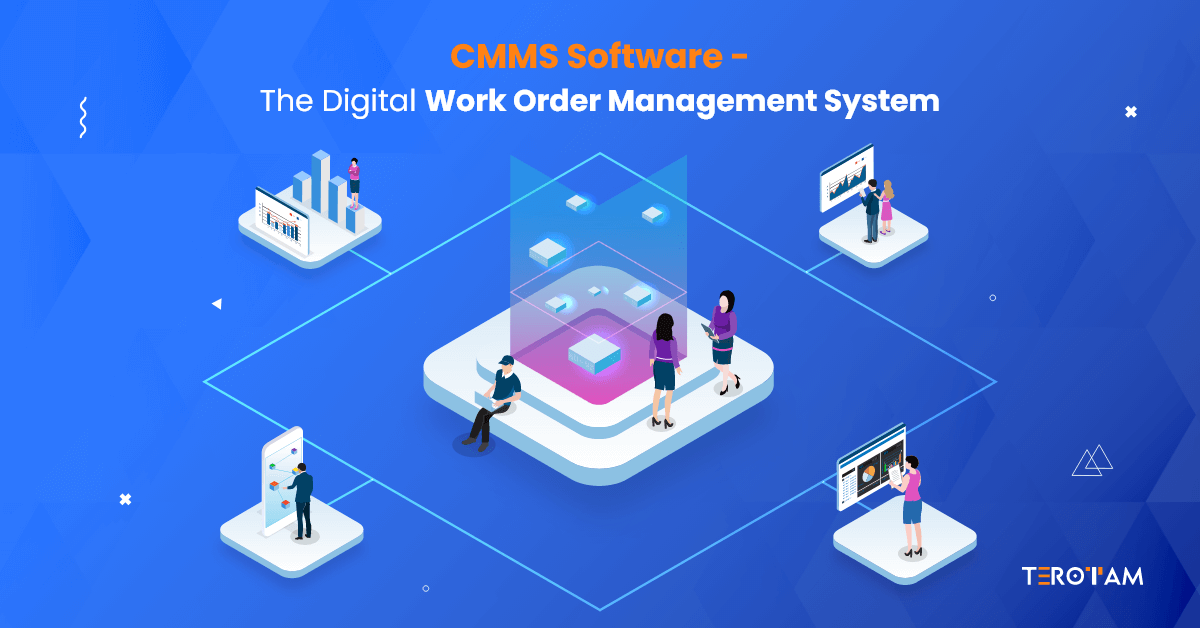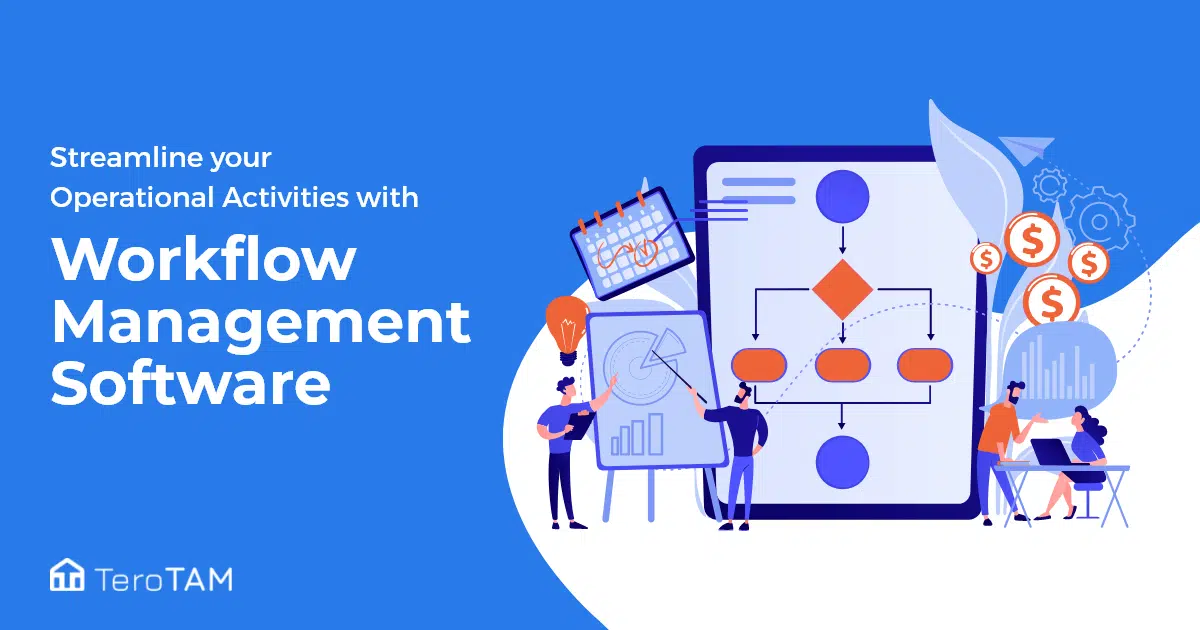It usually takes a crisis for change to be accelerated and implemented. Both individuals and companies can attest to this. Change is more difficult to implement in larger organizations, especially when new technology is being adopted. The choice of the tool is the first obstacle, particularly if it is a tool like workflow software that will be utilized by the entire firm.
When it comes to choosing tools like workflow management software, it is quite essential for any organization to keep their fundamental knowledge clear about what workflow management is, what’s purpose of it in the company work culture and what they must consider in it before selecting any workflow management Tool. To make it easy and save the company decision maker’s time and energy spending on researching such things, we are putting all the information in this article to use as ready reckoner. Let’s dig in.
What is Workflow Management?
Workflow management entails planning and enhancing the routes taken by data to perform assigned tasks within a set amount of time. It entails setting up processes in the most effective method, spotting superfluous work, developing an effective procedure, and coming up with improvement ideas.
Why Organizations must invest in Workflow Management Software Solution?
Change is inevitable but challenging to embrace in every generation. Neither is the twenty-first century taking it easy. Modern technology such as computers, laptops, and smartphones was born from it. Today’s workers depend on their mobile phones for work and use the cloud’s capabilities to access and save data on any device. Finding a workflow management system shouldn’t be difficult because technology has advanced significantly in this field. It is shocking, however, how many companies fail to see the value of workflow software or BPM tools for their various business operations.
Without a workflow management system in place, even the largest technology companies risk having unstructured tasks and disorganized documentation. Stacks of papers and folders holding receipts, invoices, paperwork, forms, and leave request forms to result in disorganized tasks.
Let’s check out the features you must consider before deciding on business process management workflow software.
12 must-have features to consider before choosing the Workflow Management Software
1. Hassle-free Onboarding
People are more likely to use technology when it properly suits their demands and is simple to use. In fact, because it makes their work simpler, more pleasurable, and more productive, they will transition from being only users to becoming champions. When the technology becomes cumbersome for users, normally they start avoiding it and later on it results in a chaotic situation in the organization. So, choosing software that is easy to use, simple to understand, and effortless to implement is the best one to decide on.
2. Accessible with Any Compatible Device
The workforce of today is all about mobility. Tablets and Smartphones are overtaking PCs, and Laptops are widely used. Your workflow automation solution soon becomes indispensable by enabling your workers to use their own devices to access files and data, as well as communicate with one another while they are away from the office.
3. Customized Dashboard for your Business
What is significant to one firm may not be significant to another. A configurable dashboard is useful for this reason. You can use this feature to build your dashboard around the factors that are important to your particular business workflow, such as:
- Local-specific standards
- Industry Standards And Accreditations
- Budgetary Restrictions
- Requirements for Outsourcing or Vendors
- Legal factors of a State level, National, or International Level
- And many more…
4. Flawless Knowledge Sharing Across the Organization
Automated Workflow management creates a single shared workspace, which quickly establishes itself as the ideal setting for knowledge sharing. A shared workspace enables team members to rapidly exhibit their knowledge to the group and be recognized for it, whether it’s a consumer insight, a trending issue, or a useful suggestion.
The Best Workflow management software must have an integrated knowledge-sharing system that allows its users to share knowledge and documents that keeps the other stakeholders informed and updated about what they must know before the task or any situation comes to them. Such a feature makes the decision well informed and logically great which is very important for any issues to avoid later on.
5. No More Painful Coding
Code is understood by IT professionals, but not by other users. This is a time-consuming project, whether you’re teaching the required team members the fundamentals of coding or giving IT instructions on how to build up a workflow engine. In business process management, a protracted deployment and development phase that consumes time and resources is the last thing you need. Your workflow management software’s intuitive drag-and-drop and form-driven process features reduce the need to study or have coding experience.
Managers and supervisors may develop the forms and workflows they require without having to approach the IT department each time something changes thanks to the removal of the need to know or learn how to code. People that use the software often now have more influence over it thanks to this strategy.
6. Easy to Integrate with Any Third-party Software
The ability to integrate your product with other well-known third-party cloud-based apps is the most frequently requested feature ever for increasing productivity. For daily tasks, a number of well-known programs are necessary, including Microsoft Office 365, Google Suite, Slack, and many others.
It would be a fantastic approach to let staff carry on working exactly as they always had if the software you select can handle all of them. The overall procedure is the same, with the added benefit that all of these dissimilar systems seamlessly integrate thanks to a single source of information.
7. Supportive to Spot Workflow Baffles
The capability to watch the full workflow process from above is another crucial feature. Automating a process is only the first step, after all, as there are inevitably many flaws in a process. They need to be handled as soon as possible, and only thorough company activity monitoring and analytical reporting may lead to such realizations.
There are so many steps when a workflow is formed, regardless of whether a process contains a lot of steps with a high possibility of errors or if it is looped purposelessly. A thorough KPI analysis will help understand the time it takes, and how to optimize and automate while making sure staff receive the technical support they require because a business has at least a dozen or more workflows in use.
8. Cloud-based Infrastructure
All information must be available in order to be valuable but storing it all can be expensive. Maintaining resources in a cloud environment improves data access while also
- Reducing Your Reliance On Server Systems That Take Up A Lot Of Space
- A Reduction In Energy Costs Of 60% To 85%
- Enabling Departments To Concentrate On Tasks Other Than Maintenance
Cloud-based workflow management program improves mobility and workflow efficiency in addition to offering access to several operating systems. Anyone who requires business access has it thanks to the cloud, regardless of where they are at the time. This flexibility helps you run your business more efficiently and successfully.
9. Timely Updates with Customized Notifications
Every business relies heavily on the idea of notifications to keep staff members informed about current events, activities, and emergencies. Being able to send salaries on time without a manager having to check in is a huge benefit for finance teams.
The alerts tool is available to staff members in a variety of areas, including administration, operations, and invoicing management. It promotes prompt completion of tasks, prompt responses to reminders, and overall productivity and quality maintenance.
10. The Capacity To Divide Into Parallel Workflows
A lot of work should be done simultaneously so that team members can work independently and complete assignments. It is crucial that parallel workflow is handled flawlessly by the software in order to avoid making users wait for a certain individual to do the activity.
11. Role-based Access Management
Confidential materials cannot be distributed to the entire team since not everyone has the authority to make important decisions. Role-based access guarantees that it is simpler to identify in the event of a mistake and also upholds the privacy settings in documents and tasks being completed in the company.
12. Dependable Reporting Resources
There are several workflow tools available that will let you create a straightforward workflow, but if you want to achieve a new level of efficiency, choose solutions with robust reporting options. When you first make changes to a workflow, you are already in a testing phase, and what you initially believed to be efficient may really take much longer than you anticipated.
Wrapping it up:
If you want to stay productive and keep on top of today’s tech-driven business climate, having a solid workflow management system is crucial. Therefore, it is essential to choose wisely because this decision will affect you for some time. Never accept anything less than the finest in class. Additionally, bear in mind the aforementioned considerations while you research your possibilities. To get more insights on what you must assess before finalizing your workflow management software, connect with our experts at contact@terotam.com or schedule a call with us now.







